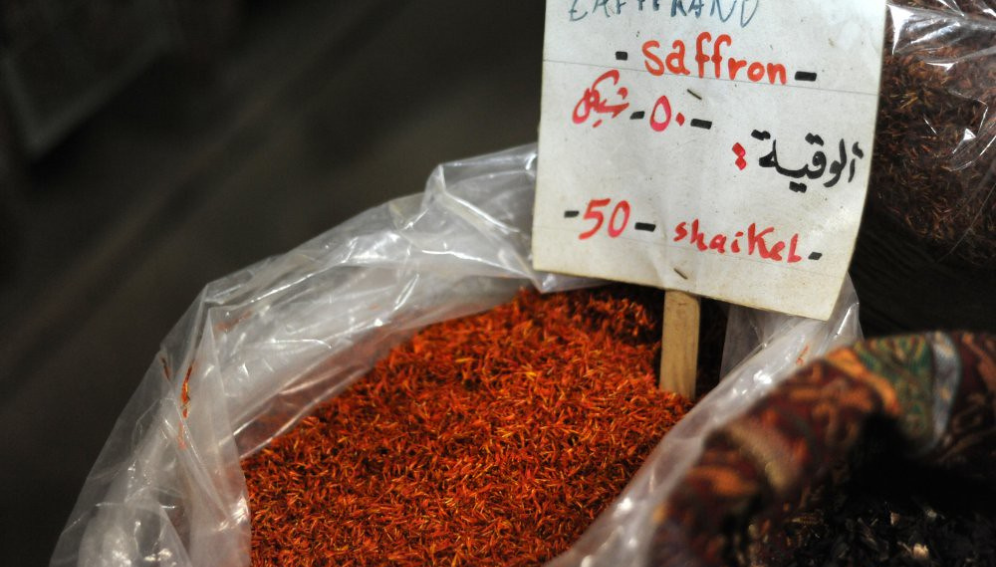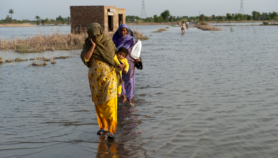22/12/23
El Nino to pile on suffering Kashmir saffron farmers

By: Athar Parvaiz
Send to a friend
The details you provide on this page will not be used to send unsolicited email, and will not be sold to a 3rd party. See privacy policy.
[NEW DELHI] The long-suffering saffron farmers in India’s Kashmir region might have to brace themselves for further dry spells due to the effects of the El Nino weather pattern.
“If January precipitation remains below normal, drought-like situations may develop in many areas of Kashmir,” said Mukhtar Ahmad, director of Meteorology at the Srinagar station of Indian Meteorological Department.
EL Nino is the warm phase of the El Nino-Southern Oscillation weather system, which often brings heavy rainfall to South American countries and drier than average conditions in many Asian countries.
It can have a big impact on the production of saffron, the world’s most expensive spice, which is already facing difficult conditions in India as climate change cuts rainfall levels.
“Three to four major spells (of snow) are needed to compensate the deficit for November and December,” Ahmad told SciDev.Net, explaining that precipitation in this period plays a crucial role in making water available for crop irrigation in the coming months.
According to an update from the World Meteorological Organization (WMO), the ongoing El Nino event is expected to last at least until April 2024.
As a result of record-high land and sea-surface temperatures since June, the WMO said that the 2023 is on track to be the warmest year on record.
Farhet Shaheeen*, an agricultural economist at Sher-e-Kashmir University of Agricultural Sciences and Technology, said that shifting weather patterns are taking a heavy toll on Kashmir’s farmers, losing up to 70 per cent of their crops in a single season.
“There has to be focus, especially from the government, on collecting better data on what kind of help Kashmir’s farmers need,” Shahee said. “Once the data is available, adaptation strategies can be implemented accordingly.”
Adaptation strategies can include collecting water more efficiently, building up flood resistance, and strengthening early warning systems, Shahee added.
Dwindling rainfall
The saffron crop in Kashmir is totally dependent on rainfall, which farmers say has become erratic over the past two decades.
Saffron is a fragrant and expensive spice derived from the stamen of the crocus sativus flower. The tiny orange strands are used for seasoning all over the world and as a key ingredient in many classic dishes such as risotto and paella.
It’s so valuable that it’s often referred to as red gold. Iran is the world’s top producer, followed by India where it is mainly grown in the Kashmiri Himalayas, supporting thousands of families.
But saffron has been facing challenges for years in India mostly related to yields and inadequate irrigation compounded by the climate crisis.
While the government had tried to mitigate these challenges by launching the 4.1 billion rupees (US$50 million) National Saffron Mission rejuvenation project in 2010, farmers are complaining that they have yet to see its impact.
The UN’s Food and Agriculture Organization (FAO) has declared Kashmiri saffron as a heritage crop, a distinction only a few crops have achieved globally.
“This plant is mentioned in the 5th century B.C in Kashmiri records and is still part of the agricultural economy,” the FAO noted.
Saffron in the Kashmir valley reached its peak in the 1990s at an annual average total yield of about 15.5 tonnes coming from 5,700 hectares. Both the land farmed for saffron and yields have declined since then.
According to Kashmir’s agriculture department, land available for saffron cultivation was down to 3,715 hectares in 2016, while per-hectare production has come down to less than 1.88 kg, compared to 6 kg in other parts of the world.
According to Firdous Nahvi, a retired professor at Sher-e-Kashmir University of Agricultural Sciences and Technology, until 1999-2000, Kashmir received well-distributed precipitation of 1,000 to 1,200 mm per year, in the form of rain and snow, but that has now decreased to 600 to 800 mm.
Nahvi was the expert who advised the Indian government about the need to install sprinkle irrigation systems for saffron cultivation in Kashmir to help farmers improve their yield and rely less on the unpredictable rainfall.
“In any part of the world, farming is unthinkable without water,” Nahvi said.
*This article was edited on 27 December 2023 to correct Farhet Shaheeen’s name.
This piece was produced by SciDev.Net’s Asia & Pacific desk.













